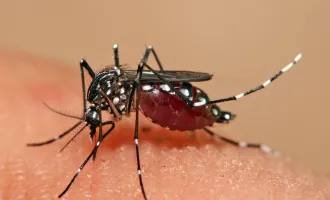This Date In UCSF History: Radiation mystery unsolved
This story was originally published in Synapse - The UCSF student newspaper, Volume 32, Number 7, 22 October, 1987
A mysterious episode that may have involved gross radiation overexposures to three UCSF workers appears to be ending unresolved.
“I think this is going to be one of those cases where you never find the final answer,” said J. Leroy Balzer, director of campus Environmental Health and Safety (EHS).
In September EHS officials received a startling notification from Radiation Detection Company, the company that reads all radiation monitoring badges for campus employees.
The July badges of three radioactive waste disposal workers indicated exposure levels 100 times those normally expected, said the company.
The three badges indicated exposures of 2,650, 2,450 and 1,550 millirems respectively—unprecedented levels for the campus, according to Art Reich, acting radiation safety chief for EHS. Normal readings for these workers are 25 millirems or less.
Reich called the badge readings “curious.” The badge company told UCSF that “these badges were obviously exposed outside the filter holders,” he said.
The monitoring badges worn by all campus employees who work around radioactive substances operate by the exposure of a piece of radiation-sensitive film.
The badge holder should block portions of the film from all radiation. But in the three current cases the entire film was exposed. This could have been caused by mishandling by UCSF employees or by the badge reading company.
EHS officials say that they have not uncovered any improper handling associated with the incident, however.
Balzer said he has no immediate plans to scrutinize Radiation Detection Company practices, although he may take the matter up during normal contacts.
“Someone could have deliberately exposed them [the badges],” he added, but he had no evidence of this, nor could he think a motive for such “sabotage.”
In last week's report, quoted state Department of Health Services (DHS) officials as saying that the university had an obligation to report the unusual readings within 30 days.
But in an interview Oct. 19, DHS officials said they were incorrect, and that UCSF was under no obligation to report such exposures to radiation workers unless the readings exceeded 3,000 millirems. Reich did write a letter to the DHS, however.
“On the basis of the information received to date, we do not believe the film badge exposure(s) reflect the exposure of the individuals,” he wrote. “We are continuing our investigation and we shall advise the [DHS] of the results of this investigation.”
The incident comes at an awkward time for the campus radiation safety program. Last March UCSF was cited by the DHS for 33 radiation safety violations.
The university is currently trying to hammer out an agreement with the state to settle the citations out of court.
Jack McGurk, chief of the DHS Radiological Safety Branch, was initially uncertain what effect the most recent incident might have on those negotiations.
But since receiving UCSF's letter, he told Synapse that “It's not going to negatively impact the negotiations, especially since they notified us, even though by law they didn't have to do that.”
Balzer says the only remaining aspect of the investigation is testing the affected workers for radiation-linked genetic damage. Those tests should be completed by the first week in November. Dr. Sheldon Wolff, director of the UCSF radiobiology laboratory, is conducting the genetic tests.
He says that without baseline readings taken before the possible exposures, the tests results will be uninterpretable. And no baseline reading is available for these workers, he said.
Wolff explained that even if genetic damage is found, it may be due to other causes, such as prior exposures to radiation or to chemical hazards. Even smoking can cause genetic changes.
The test measures cumulative exposure, he said, “so you never really know what was caused by a single incident, unless it was a gross incident,” well above the radiation levels indicated on the badges.
Wolff added that at 2,650 millirems—the highest of three badge readings—the test would not be meaningful anyway, because any exposure below 5,000 millirems is “below the resolution of the test.”
This means that the test is not sensitive enough to detect health effects for exposures below the 5,000 millirem level, he explained.
Dr. Robert Harrision, director of the UCSF occupational health clinic, counseled the workers before the genetic testing. He said that by taking a very detailed history on the workers' contacts with other possible sources of genetic damage, prior exposures largely can be ruled out.
But Harrison and Wolff agree that if the three workers received the dose indicated on the badges the genetic test cannot yield meaningful information about health effects.
They believe EHS merely wanted to reassure the workers that there wasn't a massive dose of radiation that somehow went unrecorded by the badges—a highly unlikely prospect.
“Environmental Health and Safety are the ones who wanted this done,” Wolff told Synapse. “Both my technicians and I think, 'God, if this is the dose that is there, you won't see much.' We're not particularly happy about it either,” he added, noting the expensive and laborious test process.
He said his lab was doing it “as a favor” for EHS. But Baizer said his decision to encourage the workers to undergo the test had nothing to do with the minute possibility of a massive overexposure.
When asked why EHS wanted the tests in the face of evidence that they could not yield meaningful information, he said: “You do this stricdy because you want the people to feel comfortable that you've done the best you can.”
“We're doing it because part of our professional judgment is to reassure the people that there wasn't any [overexposure] there.”
In the aftermath of this episode, Balzer added, UCSF has admonished radiation workers to rededicate themselves to safe practices.
“You do the best you can in terms of administrative procedures and training, and just make sure you tighten everything up,” he said.


